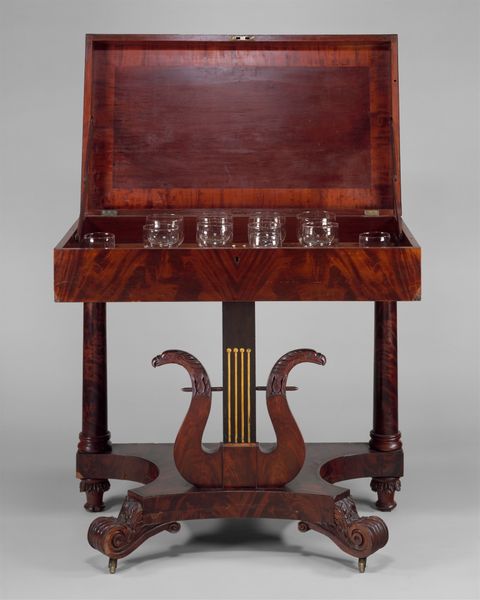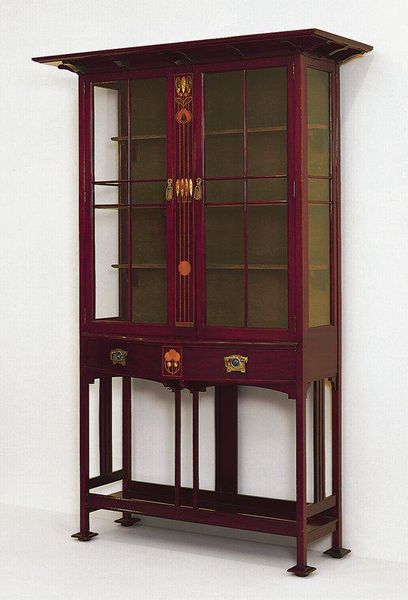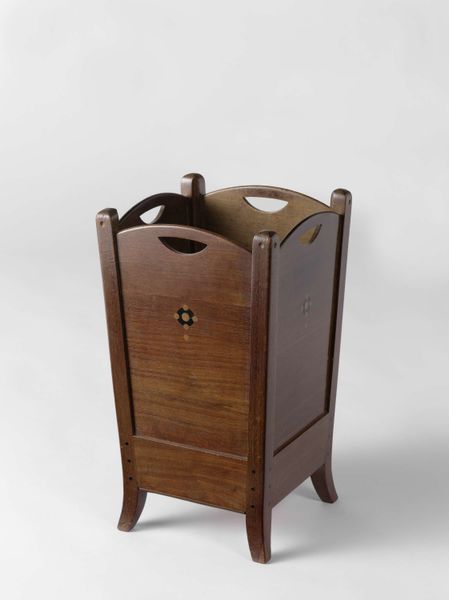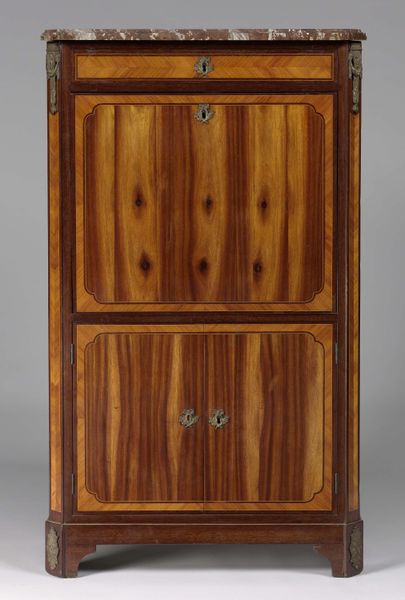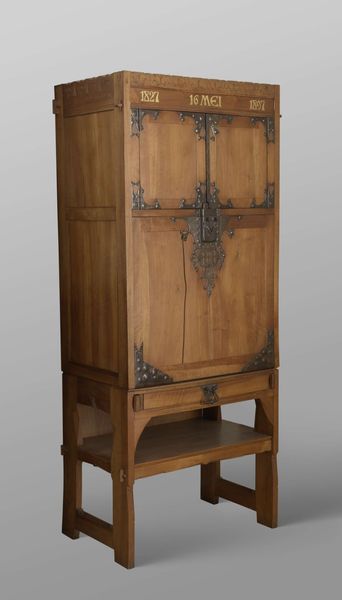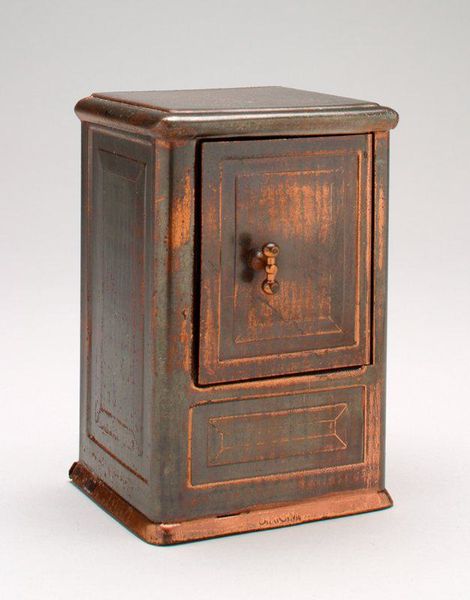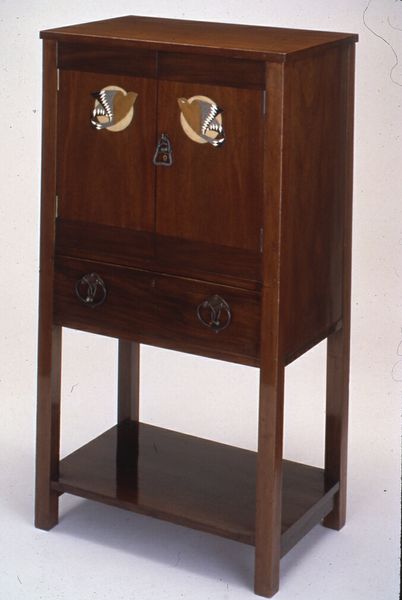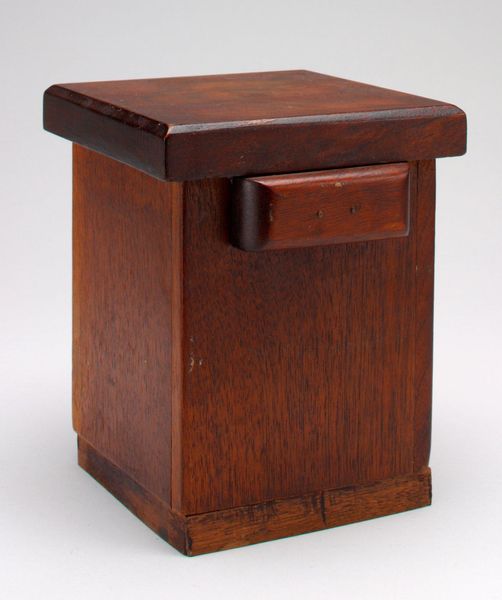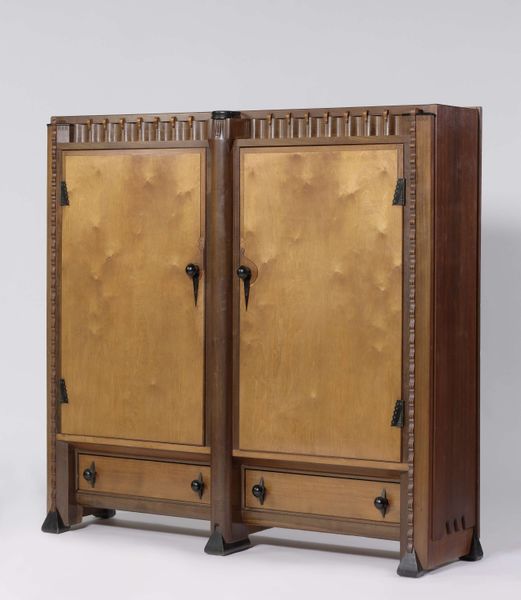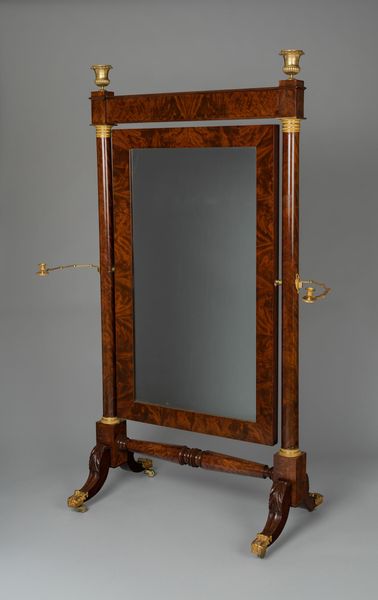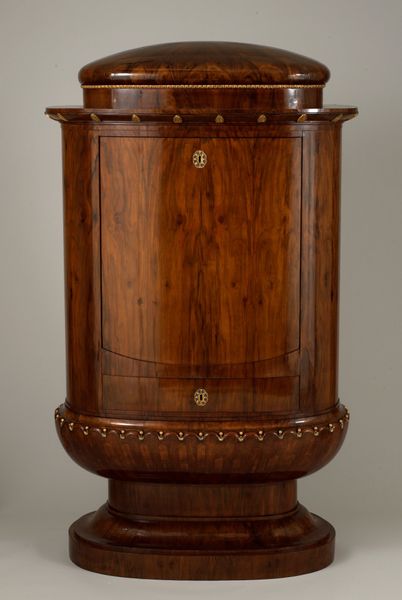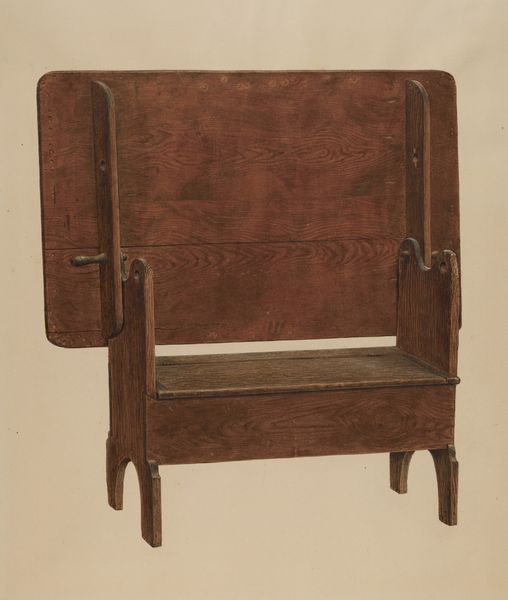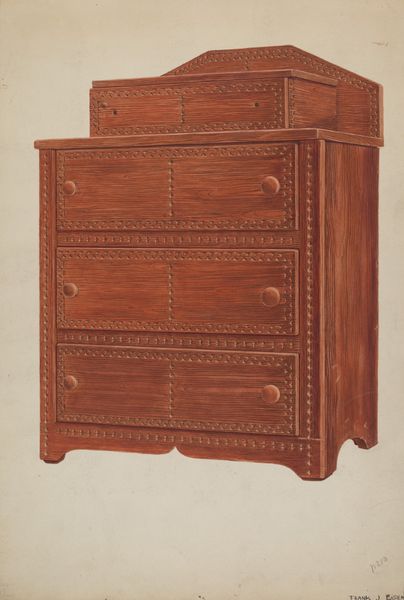
wood
#
arts-&-crafts-movement
#
furniture
#
geometric
#
wood
Dimensions: 30 1/8 x 21 1/2 x 16in. (76.5 x 54.6 x 40.6cm)
Copyright: Public Domain
Curator: I am drawn to its simplicity, the immediate sense of craft. Editor: This wooden “Cabinet,” dating from around 1890, is currently residing here at the Minneapolis Institute of Art. While its creator remains debated, attribution frequently falls to George Walton, a figure deeply enmeshed in the Arts and Crafts movement. It presents an austere facade. Curator: Austere is one word; I see a quiet rebellion. Consider the context: late 19th-century society, the rise of industrial production threatening traditional craftsmanship. A piece like this isn’t merely a functional object. It's a statement. It rejects mass production, advocating instead for handcrafted integrity and artistic expression deeply rooted in a philosophy celebrating craft over factory manufacture, pushing back against Victorian excesses, championing a return to simpler forms, and speaking to the ethics of production. Editor: Yes, but look closer, it presents an interesting dichotomy, doesn’t it? The piece champions handcrafted quality through an obviously man-made piece of work, where natural variations inherent to the wood are embraced as part of its aesthetic and yet that hand-making also presents something almost robotic in its careful geometry. The rectilinear design, the parallel grooves, even the lock echoes this adherence to form. Note the considered repetition of vertical lines countered by the horizontal emphasis of the lock mechanism— it really gives an interesting tension to the piece. Curator: And it’s precisely that tension which gives it power! The Arts and Crafts movement sought to reclaim the dignity of labor, connecting artistic creation with social reform. Walton and others pushed against capitalist modes of alienation. This wasn't merely about aesthetics; it was about challenging a whole system which reduced workers to machine parts, depriving them of creative fulfillment and turning products into impersonal, soulless commodities. It's a challenge to prevailing power structures. Editor: While I see the formal constraints you point out, to read its aesthetic as mere formalism risks overlooking its underlying message and artistic intent, particularly as it would be seen by someone viewing it at the time it was constructed. Curator: I think this highlights how viewing the artwork from either our points of view still adds something special and profound. Editor: I agree, understanding the artwork using both helps frame what could otherwise be missed when observed from a singular outlook.
Comments
No comments
Be the first to comment and join the conversation on the ultimate creative platform.
